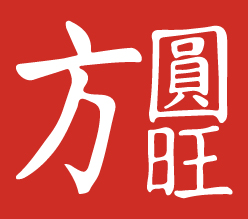YOUR LOCATION: HOME > NEWS > MEDIA COVERAGE
How to operate the international shipping transshipment container terminal
There are mainly two kinds of transfer containers in container terminals, domestic and international. Inward container refers to the container loaded at the overseas loading port, unloaded through domestic transshipment, and then transferred to other domestic ports. The customs clearance formalities are handled at the domestic loading port, and the international shipping company issues the whole process bill of lading for transshipment through the domestic transshipment port.
1、 One way ship unloading
In international maritime transport, it refers to the ship that transports the container from the port of departure to the transfer port, and refers to the ship that transports a container to the transfer port. After receiving the information from the shipping company, the shipping Planner shall hand over the transfer information to the transfer clerk for processing. The transfer operator inputs the transfer information into the computer. After unloading, check the actual unloading data, and immediately notify the relevant departments to coordinate and solve the problems found. If the agent requests to change and supplement the transfer information after unloading, the transfer salesman shall correct the relevant information on the computer in time after receiving the agent's contact list.
2、 Two way ship shipment
"Journey ship" refers to a ship that starts from a container and transfers the container from its transfer port to the port of destination. After receiving the transfer notice, the shipping personnel shall submit the notice (with the customs release seal) to the operator together with the dynamic table of the transfer box hauled from the outer area to the wharf.
3、 Trans regional transfer box
If the two ships are not in the same wharf, and the one-way unloading of the transfer box and the two-way ship are in the same wharf, the transfer box must be hauled in the section. When arranging the departure plan, the transit salesman of the wharf at the destination of the tow shall issue a transportation dynamic table (in triplicate) attached to the departure declaration form. The driver is responsible for checking the equipment handover of the clerk when towing the box. The clerk keeps one copy of the dynamic table, which is attached to the exit form and handed over to the receiving department, and the rest to the driver.
4、 Transfer of dangerous goods transfer box
For the transfer boxes of dangerous goods that are not suitable for stacking at the wharf, the transfer salesman at the wharf shall strictly control them, and timely notify the agent to arrange transfer, so as to ensure the production safety of the wharf. Before transshipment, the agent shall provide relevant work contact list to explain the cost settlement method. For the shipment of transfer boxes of dangerous goods, the transfer operator shall fill in the operation application form and dynamic form (in triplicate) and submit them for inspection. The inspector shall keep one copy and attach it to the attendance report to the receiving department, and the rest to the driver.
5、 Transfer of containers
When the container needs to be transferred internationally due to damage, wrong container and other reasons, the shipping agent shall issue a contact list to the wharf and customs (indicating the cost settlement method). If the container is dumped outside the wharf, the wharf shall arrange the departure plan and entry plan according to the customs license: if the container is dumped at the wharf, the customs, shipping agent and tallyman shall add lead seal after dumping.
NEXT : How to distinguish between heavy cargo and dumping in international shipping?

